Add the Hilbert Transformer to Your DSP Toolkit, Part 2
In this part, I’ll show how to design a Hilbert Transformer using the coefficients of a half-band filter as a starting point, which turns out to be remarkably simple. I’ll also show how a half-band filter can be synthesized using the Matlab function firpm, which employs the Parks-McClellan algorithm.
A half-band filter is a type of lowpass, even-symmetric FIR filter having an odd number of taps, with the even-numbered taps (except for the main tap) equal to zero. This results in a frequency response with magnitude of 0.5 (-6 dB) at f = fs/4. In an earlier post [1], I derived the impulse response of an ideal half-band filter:
$$h_{HB}(n)= \frac{1}{n\pi} sin(n\pi /2), \qquad -\infty < n < \infty \qquad (1) $$
This impulse response, which is non-causal, is plotted in Figure 1 (top). In Part 1 of this article, we saw (Equation 12) that the impulse response of an ideal discrete-time Hilbert Transformer is:
$$h_{HT}(n)= \frac{2}{n\pi} sin^2(n\pi /2), \qquad -\infty < n < \infty \qquad (2) $$
This impulse response is plotted in the bottom of Figure 1. From these two equations we can write the Hilbert Transformer’s impulse response as:
$$h_{HT}(n)= 2sin(n\pi /2)*h_{HB}(n), \qquad -\infty < n < \infty \qquad (3) $$
Note that the sine values are {… 0, 1, 0, -1, 0 …}. Equation 3 also applies for realizable half-band filters, as long as they are even symmetric, with the even-numbered taps equal to zero (except for the main tap). We can write realizable Hilbert Transformer coefficients as:
$$b_{HT}(n)= 2sin(n\pi /2)*b_{HB}(n), \qquad -N/2 < n < N/2 \qquad (4) $$
where N is even and the number of taps is N + 1. Our Hilbert Transformer design task has been reduced to design of a half-band filter. Given that the sine values are {… 0, 1, 0, -1, 0 …}, we can see that, aside from the main tap, |bHT(n)| = 2|bHB(n)|.
We note that multiplying the even-symmetric bHB(n) by the odd-symmetric sine in Equation 4 results in bHT(n) being odd symmetric with respect to the center tap. bHT(n) thus has a pure imaginary frequency response that is odd symmetric. We can also view the Hilbert Transformer as a band-pass filter centered at fs/4, that is realized by multiplying the half-band taps by a sine of frequency fs/4:
$$b_{HT}(n)= 2sin[2\pi(f_s/4)nT_s]*b_{HB}(n)=2sin(n\pi /2)*b_{HB}(n), \quad -N/2 < n < N/2 \quad (5) $$
which agrees with Equation 4.
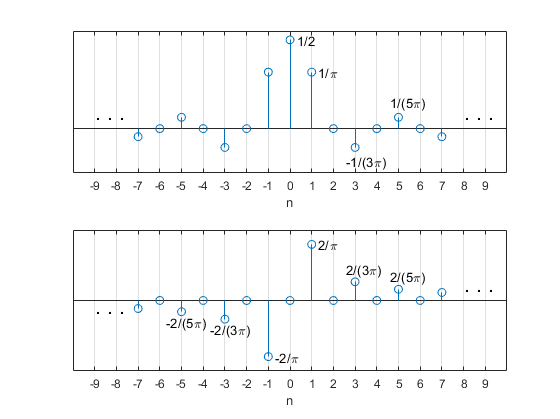
Figure 1. Top: Ideal half-band filter impulse response.
Bottom: Ideal Hilbert Transformer impulse response.
Example 1. Design of a 19-tap Hilbert Transformer
The appendix lists a short Matlab function hilbert_synth that uses Equation 4 to generate Hilbert Transformer coefficients from half-band filter coefficients. In this example, we’ll use a 19-tap half-band filter (We’ll show how to calculate the half-band coefficients in Example 2). The half-band coefficients and frequency response are plotted in Figures 2a and 2b. The frequency response, which is pure real, was calculated relative to the center tap (as was done for a Hilbert Transformer in Part 1, Example 1). The code to generate the Hilbert Transformer coefficients is as follows:
% halfband filter coeffs
b= [4 0 -21 0 64 0 -170 0 634 1024 634 0 -170 0 64 0 -21 0 4]/2048;
b_hilb= hilbert_synth(b);
b_hilb= round(b_hilb*1024)/1024; % quantize coeffs
The quantized coefficients can be listed using:
b_hilb*1024
The calculated Hilbert Transformer coefficients are:
b_hilb = [-4 0 -21 0 -64 0 -170 0 -634 0 634 0 170 0 64 0 21 0 4]/1024.
The coefficients, which are the same as those used in the examples of Part 1, are plotted in Figure 2c. Figure 2d plots the pure-imaginary frequency response, calculated relative to the center tap. The passband of the frequency response is centered at fs/4, as suggested by Equation 5. The Hilbert Transformer’s image attenuation (defined in Part 1, Example 2) is plotted in Figure 3 using a dB amplitude scale.
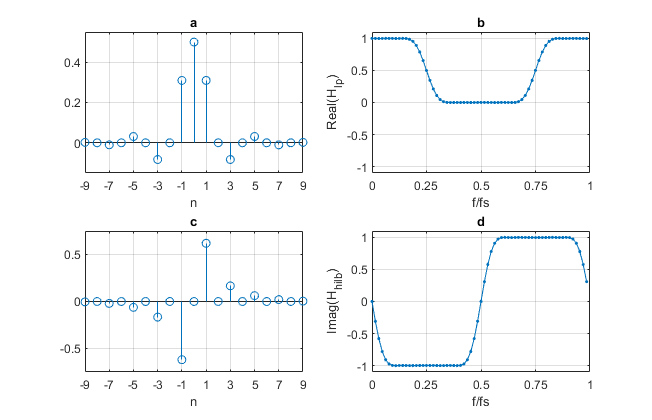
Figure 2. 19-tap Hilbert Transformer Synthesis from half-band filter.
a. Half-band coefficients. b. Half-band filter frequency response relative to center tap.
c. Hilbert Transformer coefficients. d. Hilbert frequency response relative to center tap.
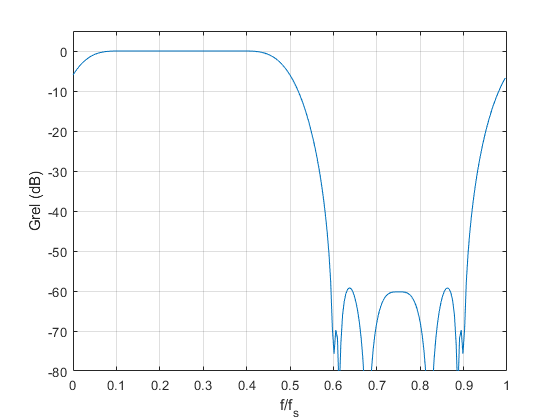
Figure 3. 19-Tap Hilbert Transformer image attenuation (see Part 1, Example 2).
Example 2. Design of a 19-tap half-band filter using the Matlab function firpm
The half-band coefficients used in Example 1 were computed using the Matlab Parks-McClellan synthesis function firpm [2], as will now be described. The function's inputs are filter order, a vector of passband and stopband frequency pairs, and an amplitude response goal vector. The amplitude vs frequency goal for this example is plotted in Figure 4: For fs = 1, the passband edge is fpass =0.15, and the stopband edge is 0.5 – fpass. For a half-band filter, the passband and stopband frequency ranges must be symmetrical with respect to fs/4. The Matlab code to synthesize the filter is as follows:
ntaps= 19; % number of taps
N= ntaps-1; % filter order
fpass= 0.15; % passband edge relative to fs
f= [0 fpass .5-fpass .5]/.5; % passband and stopband freq ranges
a= [1 1 0 0]; % amplitude response goal
b= firpm(N,f,a); % Parks-McClellan synthesis
b= round(b*2048)/2048; % quantize coeffs
Note that firpm uses frequencies relative to fs/2, which requires dividing the frequency vector by 0.5. The odd-symmetry of the response goal with respect to fs/4 results in even-numbered taps (other than the main tap) being very close to zero. They are then forced to zero by using rounding, as shown above. The coefficients are the same as those listed at the beginning of Example 1:
b= [4 0 -21 0 64 0 -170 0 634 1024 634 0 -170 0 64 0 -21 0 4]/2048
The magnitude response is plotted in Figure 5, where we see that |H| is -6 dB at fs/4.
A note on choosing half-band filter length: Half-band filters must have an odd number of taps. Also, for filters of length 5, 9, 13, …, the end coefficients are zero. This means that the useful values of ntaps are 3, 7, 11, … That is, ntaps = 4K -1, K = 1,2,… Filter order N is equal to ntaps – 1.

Figure 4. Half-band filter response goal. Passband = [0 0.15]; stopband = [0.35 0.5]
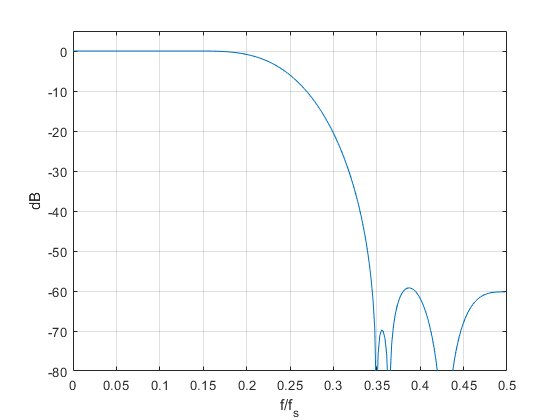
Figure 5. Magnitude response of 19-tap half-band filter.
Passband = [0 0.15]; stopband = [0.35 0.5]
Example 3. Design of a 35-tap Hilbert Transformer
Here we again design a half-band filter and then compute Hilbert Transformer coefficients from the half-band coefficients. The approach is the same as for Examples 1 and 2, but we change ntaps to 35 and increase the half-band passband edge fpass to 0.2. We also decrease the coefficient quantization step from 1/1024 to 1/4096.
% 1.halfband filter
ntaps= 35; % number of taps
N= ntaps-1; % filter order
fpass= 0.2; % passband edge relative to fs
f= [0 fpass .5-fpass .5]/.5; % passband and stopband freq ranges
a= [1 1 0 0]; % amplitude response goal
b_hb= firpm(N,f,a); % Parks-McClellan synthesis
% 2.find hilbert coeffs
b_hilb= hilbert_synth(b_hb);
b_hilb= round(b_hilb*4096)/4096; % quantize coeffs
b_hilb'*4096 % list quantized coeffs
The resulting coefficients are:
b_hilb = [-9 0 -23 0 -47 0 -88 0 -152 0 -255 0 -431 0 -812 0 -2588 0 2588 0 812 0 431 0 255 0 152 0 88 0 47 0 23 0 9]/4096
The frequency response is plotted in Figure 6, along with that of the 19-tap version. The image attenuation in dB is plotted in Figure 7, which shows markers at f/fs = .05 and its image, f/fs = .95. The image level is about -63 dB. So, this design provides greater than 60 dB image attenuation for frequencies as low as .05*fs. The frequency response in the passband is plotted in Figure 8. The response is flat to within +/-.01 dB from .05*fs to .45*fs.

Figure 6. 35-tap and 19-tap Hilbert Transformer frequency responses.
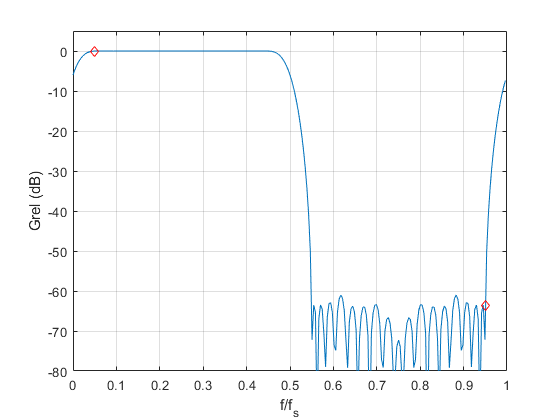
Figure 7. 35-tap Hilbert Transformer image attenuation. Markers at f/fs = .05 and 0.95
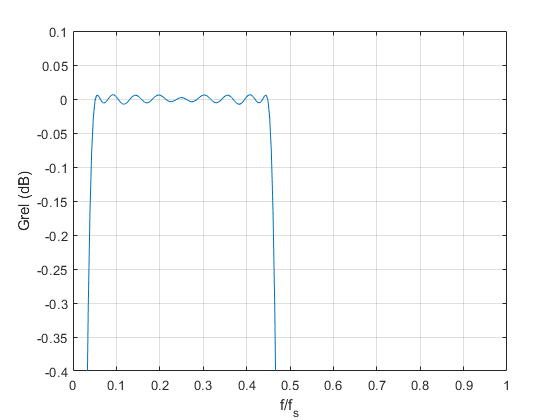
Figure 8. 35-tap Hilbert Transformer passband response (dB).
For the appendix, see the PDF version of this post.
References
1. Robertson, Neil, “Simplest Calculation of Half-band Filter Coefficients”, DSPRelated, Nov. 20, 2017, https://www.dsprelated.com/showarticle/1113.php
2. firpm, Matlab website, https://www.mathworks.com/help/signal/ref/firpm.html
Neil Robertson December, 2022
- Comments
- Write a Comment Select to add a comment

Hi Neil and thank you for another very educational pair of articles.
Am I right in thinking that a natural next step after the Hilbert transform would be downsampling by 2? In Part 1, you mentioned image rejection (of the conjugate-symmetric part of the real signal's spectrum). So, I think that means anti-aliasing has been taken care of (with the usual imperfection due to filter roll-off) and we could downsample by 2.
For example, would your AM demodulator (in Part 1) suffer if you downsample after the Hilbert transform? The incentive would be to halve the subsequent processing (e.g. CORDIC).
If I'm not mistaken, after downsampling, this whole operation would become mathematically equivalent to a digital downconverter that keeps the "whole" band. In other words, the center frequency is fs/4 and the complex baseband bandwidth is fs/2. So, we want to: mix -fs/4, then decimate by 2.
If that is correct, then I think we can derive your Hilbert transformer in another way (not better, just interesting). Mixing by -fs/4 is just multiplication by a repeating sequence of [1, -j, -1, j, ...]. So, we can split the purely-real and purely-imaginary parts of the mixer output, and then absorb the +/- signs into the filter coefficients. If I'm not mistaken, this +/- flipping corresponds to the sin(n*pi/2) = {… 0, 1, 0, -1, 0 …} that you multiply onto the halfband coefficients above. I may have missed a shift by fs/4 somewhere, but I think the two concepts (Hilbert transform and DDC) must be quite closely related.

Harry,
You are right! You can downsample the Hilbert transformer output by 2. The AM demod in Part 1 of this article has fs = 200 Hz and carrier frequency = 22 Hz. Here, I changed carrier frequency fc to 61 Hz, which is > fs/4. Then I downsampled by two and performed demodulation.
Fig 1. AM demod output using downsampling by 2
Fig 2. Spectrum of Hilbert Transformer complex output before downsampling
Fig 3. Spectrum of Hilbert Transformer complex output after downsampling by 2
fc= 61;% Hz carrier frequency
:
:
x_r_dec= x_r(1:2:end); % downsample HT output
x_i_dec= x_i(1:2:end);
y= sqrt(x_r_dec.^2 + x_i_dec.^2); % AM demodulation
x_c= x_r + j*x_i;
[PdB,f]= psd_kaiser(x_c,N,fs); % spectrum of complex HT output
x_c_dec= x_r_dec + j*x_i_dec;
[PdB_dec,ff]= psd_kaiser(x_c_dec,N,fs/2); % spectrum of downsampled HT output

Fig 1. AM demod output using downsampling by 2

Fig 2. Spectrum of Hilbert Transformer complex output before downsampling

Fig 3. Spectrum of Hilbert Transformer complex output after downsampling by 2
To post reply to a comment, click on the 'reply' button attached to each comment. To post a new comment (not a reply to a comment) check out the 'Write a Comment' tab at the top of the comments.
Please login (on the right) if you already have an account on this platform.
Otherwise, please use this form to register (free) an join one of the largest online community for Electrical/Embedded/DSP/FPGA/ML engineers:


















